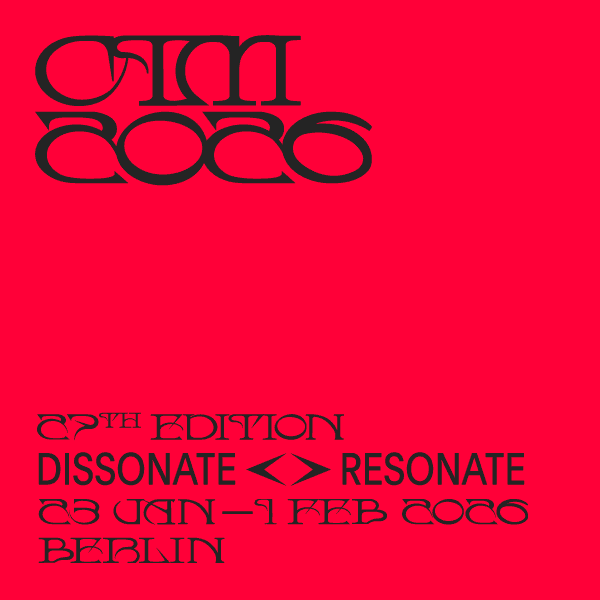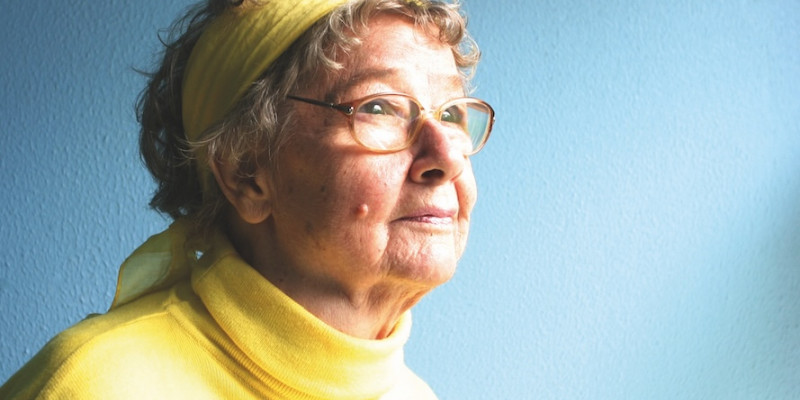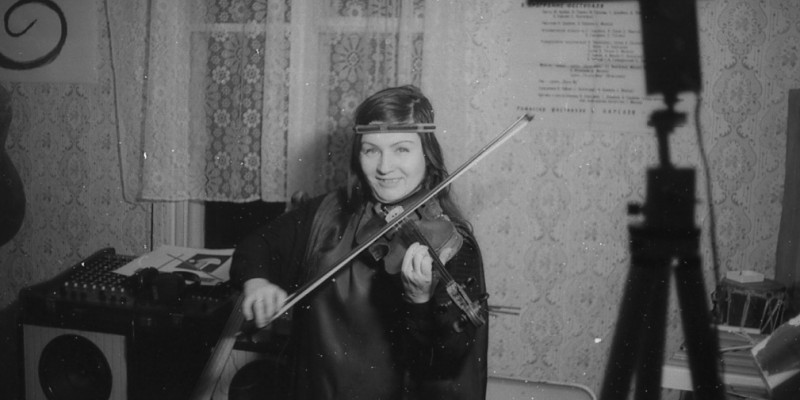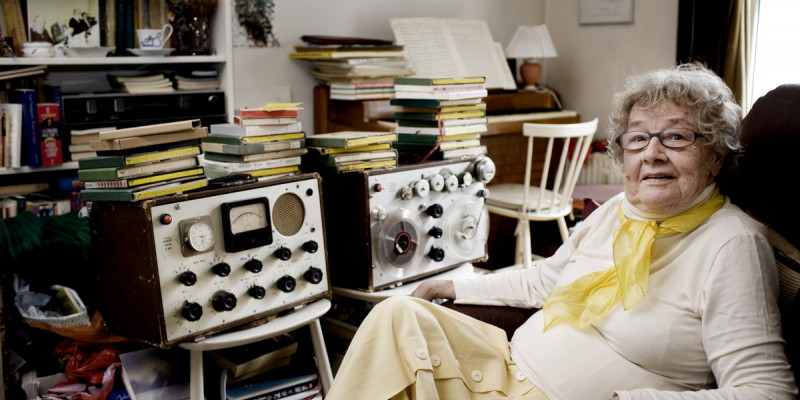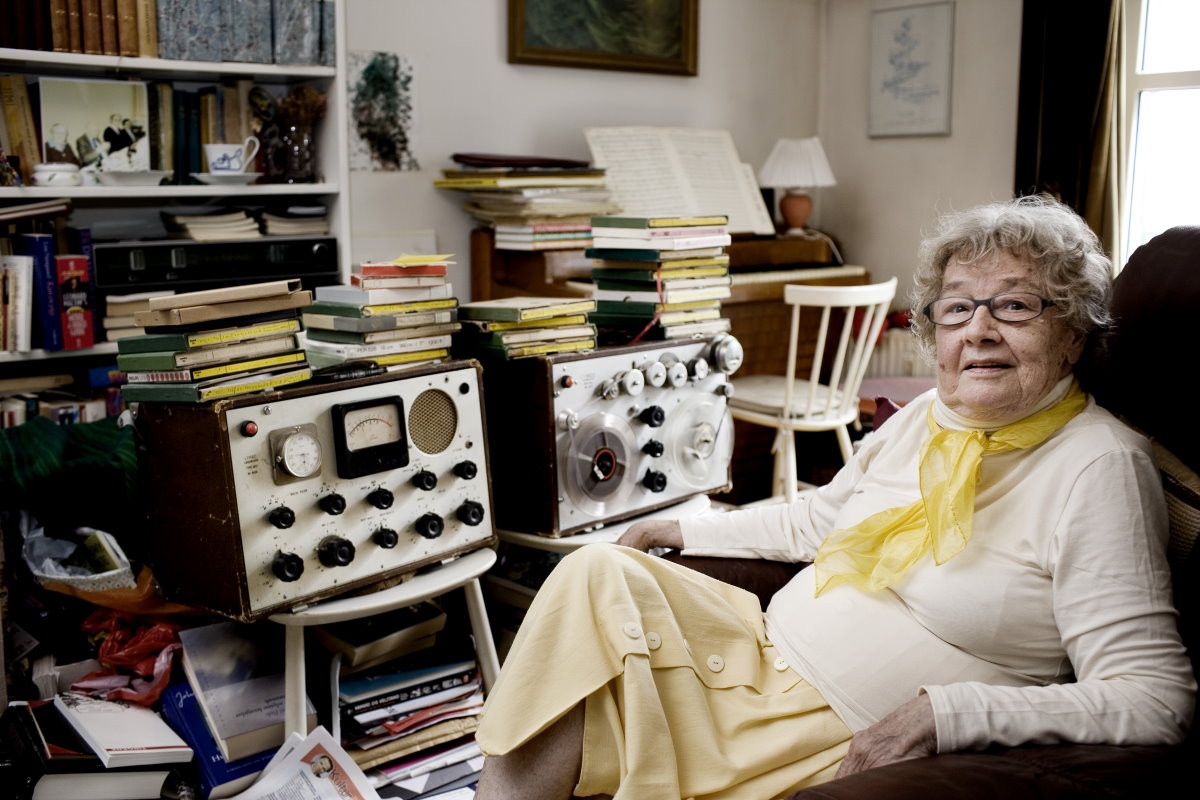
Another day, another rediscovery of Else Marie Pade
The story of Else Marie Pade, one of the most important Danish electronic composers in the post-war period, is a good story. So good, even, that more and more people have started telling it. Some with a keen historical insight into the history of electronic music, others with a, what shall we say, more freely relationship to the facts.
When Aarhus Municipality inaugurated the first section of the city's new light rail system in December 2017, it thus not only marked the beginning of easier travel around Else Marie Pade's hometown. It also became an occasion to make the composer part of the story of the city, which previously carried the slogan »Aarhus – Danish for progress«.
So when Aarhus Letbane [the Aarhus tramway company] published five short podcasts earlier this year about some of the historic stops on what today amounts to more than 100 kilometers of rails, one of them was about Pade. Here we hear about her rebellious attitude towards the German occupying power: that she spat at one of the soldiers, but got away with it by fleeing in a tram. And that she became a woman of resistance and ends up in the Gestapo's prison, where she scratched notes into the wall.
It is really Danish for progress
So far, so good. Else Marie Pade's life story is so colorful and captivating that it was previously, in 2009, marketed to a wide audience with two major biographies, one by Denmark's largest publishing house, Gyldendal. And although both Andrea Bak’s Else Marie Pade and Troels Donnerborg’s Klangen af en stjerne [The sound of a star] put the human above the music in their portraits, none of them go as far in their hero worship of the composer as Aarhus Letbane.
According to the podcast, which actually has a historian as the sender, Else Marie Pade invented electronic music while she was in prison. It is really Danish for progress.
On the whole, it is of course unimportant what a traffic company might have misunderstood about a Danish niche composer. If I highlight the story anyway, it is not only for its comic value, but because it might serve as a frightening example of a trend in the Danish Pade reception in the 21st century: the attempt to make the value of the musical oeuvre last step with the fantastic biographical narrative.
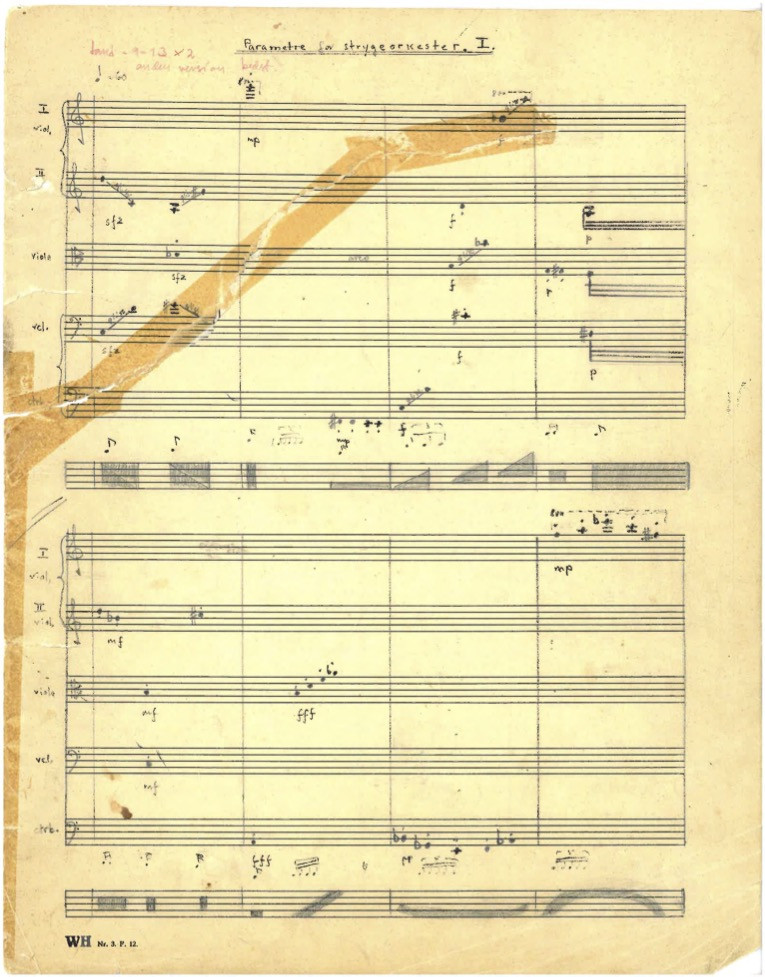
For no Danish composer has ridden a wave of – justified – goodwill like Else Marie Pade, since she was rediscovered in 2001 by two young Danish musicologists, who interviewed the then 76-year-old retired musician for Dansk Musik Tidsskrift [Danish Music Magazine, the predecessor to Seismograf]. Yes, the tribute has at times been so massive that you are legitimately excused if you thought that she, because of this the incredible publicity, must have invented the whole of electronic music.
I even received one of the yellow Netto bags containing her archives
Now for orchestra
I myself worked on what has today become Else Marie Pade's first sheet music publisher, Edition S, when her son, Morten Pade, handed over her left behind scores, sketches, notebooks, press clippings, reel tapes and probably a lot more to the publisher after the composer's death in 2016 .
I even received one of the yellow Netto bags containing her archives and cautiously asked my boss whether a small moving box with the reel tapes for works such as Symphonie magnétophonique (1958-59) should be locked away instead of standing in the middle of the floor next to my desk. Well, there could probably a point here.
The first, quick searches of all the submitted material, which gradually piled up around the office, showed that Else Marie Pade had left more than just the electronic legacy, which had already been released on several CDs immediately after the rediscovery in 2001. There were scripts for audio plays, letters about unrealized musical drama, graphic scores, but also – jackpot! – sheet music for acoustic music.
Edition S could thus write another new story about Else Marie Pade. On the publisher's English-language website, it was initially announced as an investigation in Pade's archives. What it showed: that the "electronic pioneer" was »much more than that«.
The interesting thing is the attempt to reframe Pade as an artist whose works can now be sold to wealthy orchestras
The composer Hans Peter Stubbe Teglbjærg, who was hired by the publisher as chief investigator, stated in this connection:
»The story that will be told about her in the future should include that she was an amazingly versatile composer who worked carefully with music and sound regardless of medium or genre. It is well-composed music that meets us here.«
At the end of 2022, an album with four works for orchestra was therefore released, which according to the record company Dacapo – a sister company to Edition S – showed that Else Marie Pade »also wrote particularly visionary orchestral music«.
The veracity of this assessment can be debated; the two longest works on the album at least bear the stamp of having been written by a young composer who at the time was taught privately by colleagues Vagn Holmboe, Jan Maegaard and Leif Kayser.
But the interesting thing is the attempt to reframe Pade as an artist whose works can now be sold to wealthy orchestras. This naturally appeals to a classical sheet music publisher, whose interest in an electronic composer might initially surprise some. And so it serves as another example of the posthumous attempts to take ownership and shape the image of Else Marie Pade.
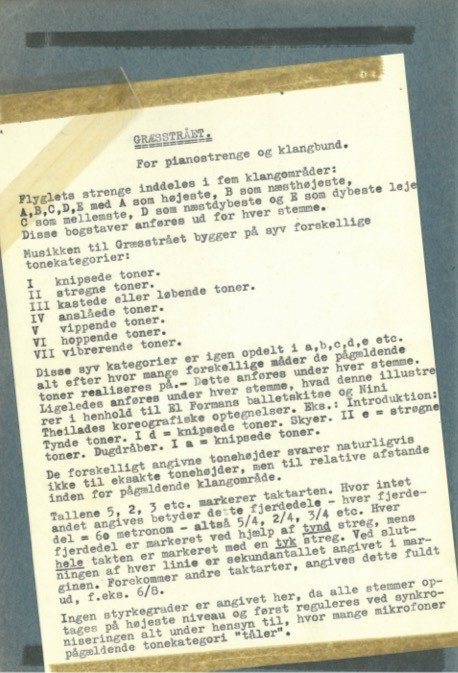
Was she a victim?
In that story, you cannot avoid Henrik Marstal, one of the two musicologists who rediscovered Pade in 2001. With exemplary zeal, he has pushed perhaps more than anyone else to pull the composer out of oblivion and highlight her musical qualities.
First with the Dansk Musik Tidsskrift interview, created in collaboration with Ingeborg Okkels. The self-proclaimed tribute album site EMP RMX 333, where he and a number of younger electronic musicians remixed Pade’s Etude (1961) immediately after her death. And finally with the thorough biography Else Marie Pade (2019), which, in contrast to the already published books about the composer, is written by a music specialist.
The term pioneer is used interchangeably, but has an aftertaste of outdated genius aesthetics about it
My objection, when I reviewed Marstal's book on publication: that it writes Pade free of her contemporaries instead of writing her into it. This gives her the character of an isolated genius, for whom electronic music was an inner revelation rather than a link in the larger development, which composer and writer Jonas Olesen has a better view of in Pionerer & outsidere: Dansk elektronisk musik 1928-1980 (2022) [Pioneers & outsiders: Danish electronic music 1928-1980].
Despite all the qualities of the Marstal biography – and they really are many – it does not manage to completely avoid biographicalism either. The obstacles Pade met in her private life as a woman of resistance and housewife-but-also-artist spills over into the interpretation of the musical works, which are sometimes attributed to greater defiance and psychobiographical reason than necessary.
The book therefore ends by setting Else Marie Pade into a victim role, from which it is then up to the new stories, including Marstal's, to liberate her. This is based on the idea that the contemporaries did not understand her because she was ahead of her time, and that the damage must now be repaired.
But was Pade a victim as a composer? All other things being equal, through her employment at Danmarks Radio, she had access to electronic equipment like no other Danish composer in the post-war period. The recognition she achieved at the time also takes up very little in the stories, just as the factual criticism of her works by reviewers of the time is often read somewhat tendentially as a dismissal of her gender and of electronic music in general.
It is details like these that demonstrate that today's portraits of Else Marie Pade as a composer cannot claim to be completely free of a desire to steer the narrative about her in a certain direction. The term pioneer is used interchangeably, but has an aftertaste of outdated genius aesthetics about it – it has the effect of making the world around the pioneer disappear.
The business Pade
Viewed cynically, one could say that today Else Marie Pade really is much more than an electronic composer: She is a business – one that needs to be expanded to new markets.
As a female composer with orchestral works from the 50s and 60s, she is also a brand for institutions that struggle with diversity; the classic radio channel P2 appointed, perhaps a little surprisingly, The Orchestral Album to one of 2022's best releases. Many have an interest in jumping on the Pade wagon.
When Henrik Marstal wrote the liner notes for this particular album, he called the recording of the four orchestral works »nothing less than a small sensation« that »will make it as legitimate to talk about her as an ‘acoustic’ composer in the future as it has been to speak of her as an ‘electronic’ composer«.
What will we invent next time?
One can then wonder why they had to go to Sweden and enlist the Malmö Opera Orchestra to record the album. Did no Danish orchestra see something in the project? And thus a new story about Else Marie Pade as a victim could be established. But at the same time, that would be to ignore how few composers it is actually possible to record for an orchestral album.
In any case, the fact is that now, almost ten years after the composer's death, we are apparently at the beginning to a completely new chapter in the story of Else Marie Pade. Where the 00s and 10s were spent positioning her as an electronic pioneer, these years are filled with first performances and recordings of forgotten acoustic works.
»One is tempted to ask: I wonder what she is up to next time?« writes Marstal in his excited liner notes. One could also ask: What will we invent next time? In any case, the past twenty years of Pade reception show that her works can inspire many to tell their own story about the composer. It is of course also a way to keep the music alive. Whether people actually hear it, or whether they simply hear the many stories about the artist behind it, is another matter.
Next stop: Who knows?
This article marks the first stage of our collaboration with German magazine Positionen and Polish magazine Glissando, ignited by Else Marie Pade's 100. anniversary this year. Mainstreaming is dedicated to women composers of electronic music and the way they have been situated, and situated themselves, in the discourse of contemporary music.
English translation: Andreo Michaelo Mielczarek
